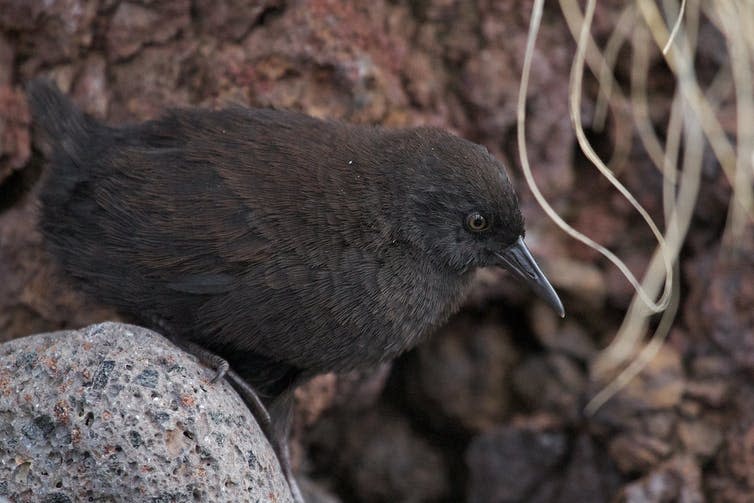Flightless birds were more common before human-driven extinctions – new study

When the first humans started to colonise all the regions of the world, many species went extinct. Some were directly hunted to extinction, others saw their habitats destroyed, and yet more were wiped out by the introduction of non-native predators like rats.
One of the consequences of human-driven extinctions is the distortion of biological patterns. Studying how evolution works is more challenging if humans have caused many species to go extinct, because the diversity we see today may not be representative of how evolution worked up to the point that we came on the scene.
We know that evolution can sometimes take strange paths. For instance, while birds are acknowledged masters of flight, some have nevertheless abandoned this ability for life on the ground. Bird species often evolve flightlessness in environments with no predators, because flight is a luxury that is not needed when there are no enemies to escape from.
The small bird known as the “Inaccessible Island rail” is one example. As the name suggests, its island home is difficult to access and, with no predators living there, the rail can run around safely.
Today, 60 species of flightless birds exist, across 12 bird families – although most are penguins, rails or ostriches and their relatives – and many are threatened by extinction. However, our recent work, now published in Science Advances, has found that evolution towards flightlessness has been much more common than these 60 species would suggest, once we factor in bird species that went extinct following human arrival in an area.
We mined historical records of archaeological findings to compile a list of 581 bird extinctions likely caused by humans. Of these species, 166 could be considered flightless (or at best only weak flyers), representing 29% of the extinct bird species. Examples include: the iconic dodo, a flightless pigeon from Mauritius; the moa-nalos, a sort of flightless goose from Hawaii; and the elephant birds, giants from Madagascar that are probably the largest birds humans ever encountered.
The archaeological record thus increases the list of known flightless birds from 60 to 226, when both living and extinct species are considered. This shows that the evolution of flightlessness in birds has actually been a widespread phenomenon, occurring in at least 40 bird orders and evolving independently at least 150 times.
The major evolutionary transition to flightlessness occurred at a rate four times higher than it would appear based solely on living species, suggesting that the evolutionary path from the sky to the ground in birds was not nearly as rare as we thought before. There used to be flightless ibis, owls, woodpeckers, hoopoes and finches – all sadly now gone.
Our findings also show how selective anthropogenic extinctions can be. Many bird species evolved in response to the absence of mammals, so they were particularly vulnerable to humans arriving on their islands and bringing mammals like rats along with them. As well as flight, these birds had also lost their fear of such predators.
The extinctions of flightless birds also resulted, in some instances, in the disappearance of important ecological functions that are unlikely to be replaced by the remaining species. For instance, the New Zealand moas probably took the ecological role of mammal herbivores, browsing on trees and shrubs like the deer or goats native to other continents do.
New Zealand plants are thought to have evolved novel strategies to avoid being eaten by these birds. The remaining flightless bird species represent a fraction of a once larger group, with significant ecological importance for key ecosystem functions including seed dispersal, pollination and plant-eating.
Our findings remind us that what we see today in nature might be very different to what existed before any human impact. It shows us that anthropogenic effects can also conceal the frequency of major evolutionary transitions in life forms, distorting the study of evolutionary patterns.
Humans have removed little pieces from the puzzle scientists are trying to solve. By finding some of these pieces, we can show that flightlessness was not as rare as we thought, and that to study the natural world, we need to take in to account that we have deeply transformed the diversity we want to study. Accounting not only for what we see today, but also what was there before human impacts, is the only way fully to understand how nature works.
This article is republished from The Conversation under a Creative Commons license. Read the original article.

Ferran Sayol receives funding from the European Union’s Horizon 2020 research and innovation program under the Marie Skłodowska-Curie grant agreement No 838998.
Tim Blackburn does not work for, consult, own shares in or receive funding from any company or organisation that would benefit from this article, and has disclosed no relevant affiliations beyond their academic appointment.




